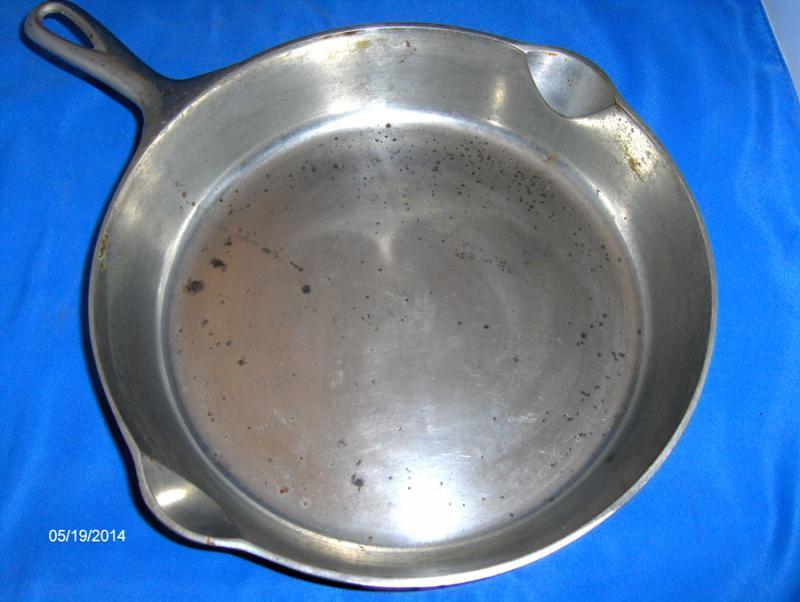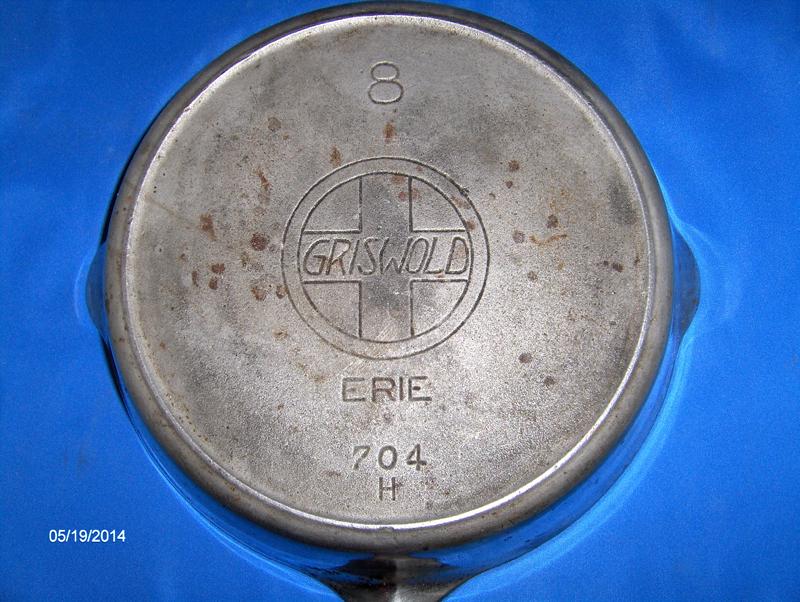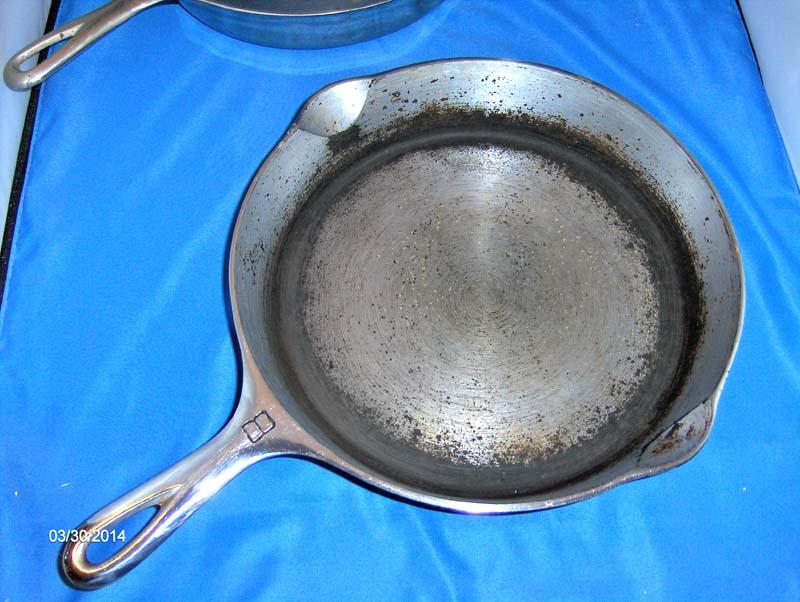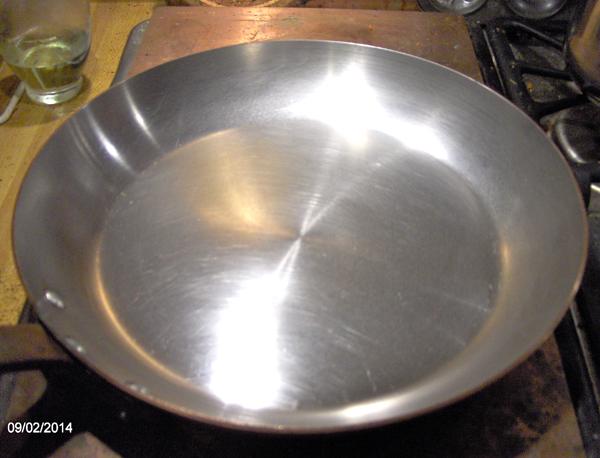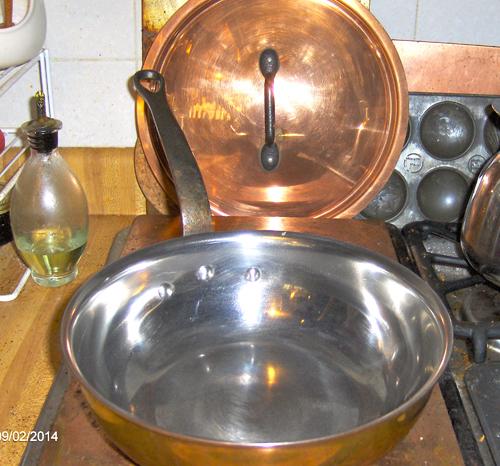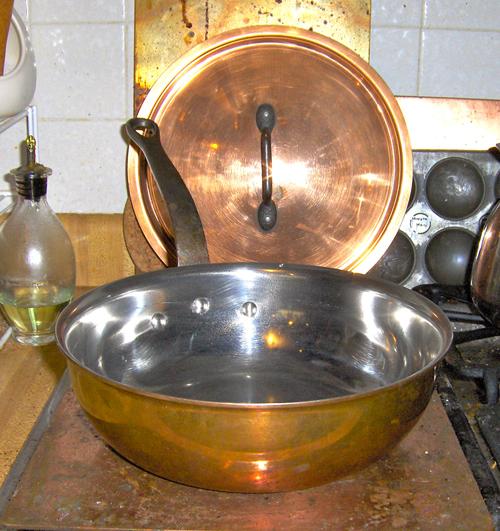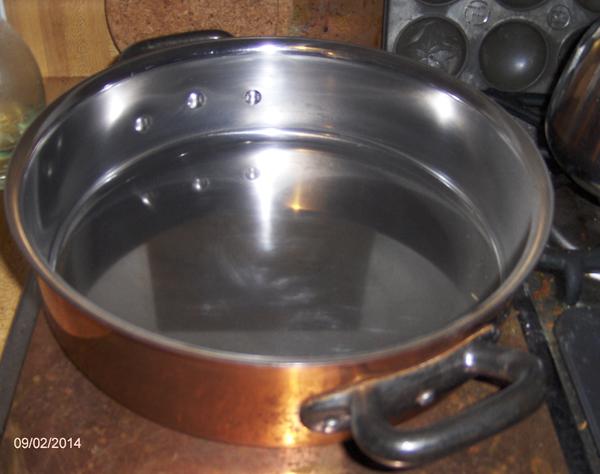-
Posts
11,033 -
Joined
-
Last visited
Content Type
Profiles
Forums
Store
Help Articles
Everything posted by andiesenji
-
I do the overnight soak in HEAVILY salted water with these and most other beans. Most "Navy" beans don't need this process but most of the heirloom varieties do. Last week I cooked some French Navy beans (from Purcell farms) and as I had forgotten to put them to soak, I did the "flash-soak" miccrowave technique (beans in a Pyrex measure, cover with water plus about another couple of inches & a teaspoon of salt, cover and microwave on high for 15 minutes till water is boiling. Allow to set for another 15 minutes, drain, rinse and cook as usual. Very large beans, lima, butter beans, etc., require a bit more water and a bit more time soaking after the microwave.
-
There are a few bean varieties other than the Anazazi, which have been found in cliff dwellings and other southwest settlements - beginning in the latter part of the 19th century and into the 20th century. Rio Zappe is one that was "reclaimed" and has become a cash crop. It can vary in color - depending on the type of soil in which it is grown, from a reddish color to an amethyst or a darker purple but always with the flecks and stripes that are deep purple - look black.
-
My favorite of the RG beans does not seem to be currently available. Snowcap - a large "meaty" bean that has always turned out perfect for me as a "stand alone" bean dish. Another favorite is the Yellow Indian Woman bean. I've never had a problem with the Negro de Arbol beans not developing a creamy texture. I prepare and consume a lot of beans and I buy from other vendors when RG does not have the varieties I want. Since 2009 (keep all my receipts) I have purchased from RG Snowcap multiple times Have purchased more of these than any other. Borlotti beans multiple times Ayocote Negro Negro de Arbol multiple times Vaquero Rebosero multiple times Moro multiple times Midnight Black Yellow Eye Good Mother Stallard multiple times Tepary (white) multiple times Flageolet multiple times Lila Beans Cranberry bean - Cargamanto multiple times Negro Criollo de Hidalgo - a superior black bean IMHO rarely available Ojo de Cabra (Goat's Eye) multiple times Christmas Lima Sangre de Toro Yellow Indian Woman multiple times The Cranberry beans are my choice for baked beans. I should add that I also buy a significant amount of beans from Purcell Mountain Farms I am a loyal RG customers but when I want or need a particular variety, I go where the supply is available.
-
I think the Negro de Arbol are more like "turtle beans" - at least the ones I have tried.
-
Did you ever get around to trying the Jamaican black beans and rice recipe I posted?
-

Useful food gifts and kitchenware that you have received
andiesenji replied to a topic in Food Traditions & Culture
I have some wax-carving tools that are very similar. From when I used to carve hard wax for casting jewelry. I also have some clay-carving tools, one of which I use in the kitchen for coring pears and small apples &etc. -
Back in the day - shortly after the turn of the last century - there was a distinct shift from hired cooks to the woman of the house actually doing the family cooking (usually assisted by one or more servants) and there was a desire for more "attractive" cooking utensils in households where copper (even then expensive) was not considered affordable. Griswold began offering these plated items - skillets, griddles and etc., and also marketed them for being "healthier" for cooking acidic foods. The fact is that just as much metal leached into the food but it didn't impart the "iron" flavor that went with the bare metal. Griswold also offered enameled products at various times and of different colors - often difficult to identify if there was no additional imprint because the enameling filled and covered the incised logos on the bottoms of the cookware.
-
I just went through my Griswold/Wagner "Blue Book" and found the "Chef's skillet" with curved which was not produced until the 1960s. My collection does not include anything later than 1950 - most much earlier.
-
The rice cooker is great for steel cut or "pinhead" oats - also steel cut barley which ordinarily takes a long time to cook and with "traditional" cooking always seems to retain a hard central bit.
-
Next up will be this cast iron Griswold (slant ERIE logo) nickle-plated #8 skillet. Oddly enough, the plated skillets are not as pricy as the bare cast iron of the same era -1906-1912. It is officially an antique - more than 100 years old. However this one is in remarkable condition. I include a photo of one (later 1920 era) that shows the typical wear seen on most of the plated skillets. From using metal utensils. Mine was inherited and it was not used all that much because this size No. 8 was much too small for the meals prepared in my grandparent's kitchen - there were never less than 8 adults living in the house and usually more, plus children. Also servants. There was also the farm vet - until he married and moved into one of the "bungalows" in 1947. I was lucky to get this. I virtually had to "steal" it from my mother in one of my visits home in the mid-1960s. She never used it either.
-
Industrial shelving and a storage building.
-
I'll have to look. I have a bunch of Griswold skillets, including some early "ERIE" skillets but I don't think any are "Chef" skillets. I do have the Griswold Chicken Fryer, two skillets, one deep, one regular that are "hinged" together while in use.
-
I just put my antique (1890s) Griswold (marked "ERIE") No. 6 flat-bottom kettle on eBay. Item No. 181519680548 This smaller size is much harder to find than the No. 8, according to the Griswold "Blue Book" I'm thinning out some of my "heavy metal" that is unwanted by my daughter and decided to offer this kettle today. I will be adding skillets, Dutch ovens and etc. in the coming weeks. This particular piece is probably the rarest in my collection and I inherited it from my great grandmother via my grandmother. It was in constant use when I was a child, was used exclusively for rendering beef suet for use in pastries. It "lived" on the back of the huge wood/coal kitchen range most of the year but migrated to one of the gas Estate ranges in the summer when it was too warm for the wood stove. Saying goodbye to a part of my childhood is not easy but I hope to pass it on to someone who values it as much as I have.
-
The original simnel cake was made with saffron - originally there was a lot of saffron grown in England (Essex) from the mid-fourteenth century through the 17th century until global transportation made other spices cheaper. One town, Saffron Waldon was named for it. The inclusion of saffron in cakes baked for Easter has persisted in certain areas and fallen out of fashion in others. Here is a lovely RECIPE that is virtually identical to the one I have made for decades. Another type was a somewhat fruity and custardy cake, baked in a pie crust shell that was flavored with saffron. I tried making one of these ages ago and was not thrilled with the results, although the woman who gave me the recipe produced a lovely and very flavorful result. As I recall, it used a lot of eggs and only after my mishap, did I realize that eggs were much smaller back then and I "over-egged" the thing... And here is a recipe for Cornish Saffron Cake (bread), which I tried a few years ago and found to be excellent - I used candied orange and lemon peel only. Not only was it lovely as is but made an absolutely fantastic toast - extremely tasty with tea. P.S. I just recalled that I bought some of this topping last November and used it up during the holidays and early part of the year. It was an interesting addition to rice pudding and also sprinkled on top of custards.
-
With either purchased herbs or stuff I pick from the garden, I wash them as soon as I bring them in, dry them a bit with paper towels and put them in a tall glass with just a little water in the bottom and put them in the fridge. After a few hours the tops are dry and they chop easier when they are cold.
-
I missed the earlier post with the question about the "boiled coffee" I mentioned in a previous post. Here is the quintessential method for "Norwegian Coffee" which I was introduced to in 1956 when I lodged with a family of Skandinavians in the Twin cities while attending Dunwoodie school of baking. One of the grandmothers was Finnish, another was Swedish, both had married Norwegian men. They didn't always agree about various foods, breads and sweet breads in particular, but they always agreed on the COFFEE. There are numerous recipes and a few YouTube demos, but this RECIPE is the closest to what I remember from my year in the "Ice Box"... (I hated the winters in Wisconsin and even worst in Minnesota. I love California!
-
I have a mug warmer on my desk that keeps my coffee at the temp I like until I finish it. Brewing one cup at a time works well for me.
-
Most people are surprised at the results when they try this method. Years ago, when I was catering, I used to make these for brunch service, doing a dozen eggs in a batch, and holding in chafing dishes. I can't tell you how many times guests would come up and ask for the "secret" of how the scrambled eggs were done. A few times, we did "live" cooking and I would perform the "magic" in front of an audience and once or twice there were food "professionals" who told me they had no idea that this method existed and were truly astonished at the way the eggs turned out. I have had "regular" scrambled eggs at hundreds of buffet services and to me they are always barely edible - tough, stringy, dry and virtually tasteless. To me, it is simply wasting good eggs. On one occasion I did a demo with the commercial "whole eggs" in a carton and even those were better than fair cooked with this method.
-
They show it with what we call "Canadian bacon" - fully cooked "bacon" rounds which need only reheating. However you can make sausage patties - my method is detailed on my blog, much less shrinkage than regular frying - and they can be frozen, defrosted in the microwave and used in breakfast sandwiches. It does look like fun but I am not tempted. I cook the eggs in rings or in my "blini" pan that has 4 perfectly sized chambers.
-
If you want to know what to do with vanilla beans that have become like hardwood, the solution is very simple. It is the same advice I give to folks who have dried fruits that have become like rocks... STEAM THEM! Put them in a steamer for about 10 minutes - check them - if still brittle, do another 5 minutes. That should be enough to restore the moisture and will also make your home smell wonderful. I absolutely CRINGE when someone tells me they "tossed" these things without at least trying to bring them back to life.
-
No one has mentioned saffron cake. Or Simnel cake that is an Easter tradition in the UK and in certain places in the US where English food traditions are observed - more or less accurately as in some cases the time span has been considerable. We had saffron cake when I was a child - either with orange or with almond and sometimes with both or a lemon version that contained sultanas that had been soaked in saffron-infused liquor. Just Google Simnel cake and you will get plenty of references.
-
I'm not a fan of Blue Mountain coffee and I have tried it many times, in many different roasts and brewing methods. I have never understood why people raved about it - and often can't determine which of several coffees it is in a blind tasting. To me it is flat and boring. I personally like a very robust, dark roast of an assertive coffee variety that actually tastes like coffee and I have found several that fit my criteria. For me, coffee should be freshly ground just before brewing and I use a single cup pod machine (make my own pods) (Senseo) which are no longer marketed in the U.S. but as I bought backups before they were discontinued, I believe I will be able to continue to brew coffee with this method for the foreseeable future. Distilled water is NOT good for coffee. FILTERED water - to removed the chemicals that in tap water often interfere with the optimal brewing of coffee is the best in my opinion. And lastly, I like coffee with a small amount of cream and sugar, my personal taste, because for ME, these complement and enhance the flavor and I enjoy it more that way. I have for many years collected coffee brewers, coffee apparatus and have tried just about every brewing technique known - including "boiled" coffee with egg shells to "settle" the grounds. And I agree that Sweet Marias is an excellent online vendor. I also recommend that coffee fans (fanatics) sign up for a free membership on CoffeeGeek. Many of my coffee brewers are pictured on my blog on the Vintage Electric (some non-electric) coffee brewers page.
-
I have and use copper because I like it. I used tin-lined copper for more than three DECADES because I liked it. My unlined copper preserving pans give a result that is always just what I expect. I have tried other types with less that optimal results. It does require a little work - but as my big preserving pan was made int he 1890s and other than a few dents and dings is still in perfect WORKING condition, I believe that the pieces I have now will be used by my grandchildren and great grandchildren - as will the pieces I inherited from my great grandmother. If you figure out the cost of something that last for decades, it really turns out to be more economical than pans that have to be replaced every few years. I'm frugal with some things and long ago I figured out that buying the best saves money in the long run. In kitchen ware same as with shoes and purses. I have shoes that are 25 years old and still look like new because they were top quality and I took care of them. Same with my handbags because quality might have a high initial cost but doesn't have to be replaced as often.
-
Photos of the 11 inch saucier with lid and the 12 inch fry pan. No lid came with the fry pan but I have a lid for a 10 quart "casserole" (no longer available in U.S. - I purchased it in the late '90s - the largest now available is 8 1/2 qt) that fits it reasonably well. Correction! The fry pan is Mauviel professional 2.5mm copper and was the first stainless steel lined copper piece I purchased. I think the newer ones are not as heavy - this one weighs 7 lbs 13 oz. I also have the 11 inch Saute pan/brazier, without lid, which has two handles and is very handy for stove top or oven. I use it almost as much as the saucier because there are many dishes I prepare that start on the stove top and finish in the oven and my Cadco 1/2 size oven is not quite large enough for the long handle on the saucier but the brazier fits nicely and it is much easier for me to manage with the two handles. The lid of the saucier fits it reasonably well.
-
I have this 4-quart pan and I use it all the time for all kinds of cooking - in my opinion, it is ideal for whisking sauces with a French whisk which nicely fits the curve of the sides. It is deep enough for cooking sauces so that the bubbling does not spatter outside the pot, unless it is quite full. The lid fits snugly enough so that it will retain moisture when cooking at very low heat - perfect for stove-top braising. I used it Saturday to cook ox tail. It is heavy (10 + pounds) but not so heavy that it is difficult for me to use - the handle is long enough so I can use both hands if it is quite full. I don't use it for shaking and tossing much because I use another pan for that. I also have the smaller 2 3/4 quart - 9 inches in diameter, which is okay for smaller amounts but doesn't have enough "headroom" when you really need to whisk something vigorously. And - it is ideal for stir frying small batches when one does not want to use the larger wok.



